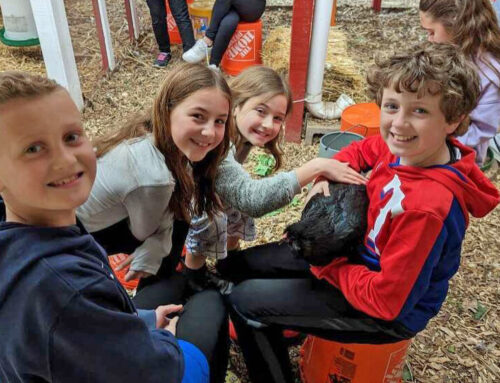
If you’ve ever wandered along the White Rock Greenbelt Trail or looped around the lake, you know what many neighbors are discovering: Our city’s trail system is becoming like our highway system at rush hour, clogged and crowded.
But good news is on the way: The city and county have taken notice, responding with new trail construction almost everywhere we look. Bond dollars are being funneled into projects that will enable more of us to access the trails without having to drive to an entrance, and will connect the trails in Lake Highlands as well as linking us with trails in other sections of Dallas.
Read on to discover where we’ll be able to hike and bike next, right here in our neighborhood.
Blazing ahead
Soccer fields, baseball diamonds, basketball courts — they’re all useful, says Rick Loessberg, Dallas County director of planning and development, but they benefit only the athletes who play those sports. These traditional recreational facilities can’t compete with the universal appeal of a trail.
“Trails cut across a broad spectrum of the population,” Loessberg says. “It doesn’t matter what time of day it is, what month of the year, you’ll find people pushing strollers, older people taking walks together, kids on their rollerblades, children walking home from school, the guys who look like Lance Armstrong in their skin-tight uniforms, people running because they’re trying to stay in shape or because they’re training for the White Rock Marathon …
“So you have this incredible group of people using the same 12-foot stretch of trail.”
Fifteen miles of new trail has been added in Dallas since 2005, making our system a grand total of 100 miles, says Michael Hellmann, the city’s park planning and acquisitions manager. That’s won’t be enough for the clamoring masses, however. Another 10 miles will be laid down over the next three or four years, and city and county plans ultimately call for 250 miles of trails in Dallas.
Eventually, it will be possible to travel from southern Plano all the way south of the Trinity River without ever leaving the trails. That’s pretty impressive for a city second only to Southern California in its connection with the automobile, Loessberg says.
“DART has made inroads to help change that, but the reality is, if we want to go pick up a loaf of bread, we’ve got to go get in our car,” Loessberg says. “If you talk to people in other cities, Dallas is one big sprawling area of highways and cars, and they’re not necessarily off base in that portrayal.”
The influx of people from other cities with more comprehensive trail plans helped to raise awareness that “Dallas was behind the times,” Hellmann says. But it took more than a comparison game to get the city up to speed — it took people not only wanting trails but using them, too.
Neighbor Steve Cospolich has been known to bike the Katy trail from his White Rock Lake area home to his Downtown Dallas office.
“From the looks of the bike rack outside my building, I’m not the only one,” he says. Lately, though, Cospolich has needed to use his car more often, since his wife gave birth to twins last year.
“I love riding my bike into work, but some days it’s just not realistic.”
These days, the avid exerciser uses the trails primarily recreationally.
“You can’t underestimate the value of having a safe place to run and bike, free from car traffic,” Cospolich says.
He believes the growing and improving trail system plays a big role in increased outdoor activities among Dallasites. Hellmann supports this notion. People are growing more and more concerned with their health, Hellmann says, and trails provide a convenient way to get out and exercise. People also are starting to “think green,” he says, and are looking at trails as a means of alternative transportation.
The future Lake Highlands Trail, for example, will connect from the Lake Highlands Town Center to a new Lake Highlands DART Station.
And perhaps the biggest driver for trail construction is their role as a catalyst for economic development. The best example of this is right along convoluted the Katy Trail, where real estate prices have jumped 25 percent over the last nine years, and houses are now being built to face the trail instead of backing up to it.
“Years ago people would just think trail systems would just bring in crime, but what’s actually happening is quite the opposite,” Hellmann says. “These trails are so popular and heavily used that they actually work as a built-in crime watch system.”
The first phase of the Katy Trail was completed in 2001, and was so successful that “everybody jumped on the trail bandwagon,” Hellmann says. That spurred his creation of the Dallas Trail Network Plan, the master plan for the entire city, in 2005, with additional updates made last year.
And unlike other well-intended but ill-fated comprehensive city plans, “it’s not just on a shelf gathering dust,” Hellmann says. “It’s actually being implemented.”
A bird’s eye view of our neighborhood trails:
How will the city’s and county’s master plans impact our neighborhood over the next few years? Here’s a quick glance:
Cottonwood Trail
One way to get to the White Rock Creek Greenbelt Trail is by way of the Cottonwood Trail: This four-mile route will connect the White Rock trail to the Preston Ridge Trail in Far North Dallas — ultimately making for one continuous 35-mile trek stretching from Plano to downtown Dallas. The north end of the Cottonwood Trail starts on the west side of Central Expressway near Spring Valley Road, and then follows the Cottonwood Creek under the High Five interchange. The Cottonwood Trail will feed into the White Rock trail just south of Forest Lane.
A good portion of the Cottonwood Trail already is complete; the White Rock trail connection and a remaining 3,500-foot section along Coit and Spring Valley roads are slated to be finished by spring 2010. The 12-foot-wide concrete-paved Cottonwood Trail will connect to the Texas Instruments campus. Michael Hellmann hopes TI staffers will use the trail to commute to work. Based on so-called “unofficial” observations, he believes people are open to the idea.
“We’ve taken unofficial visual surveys — looking at the number of trail users wearing suits, and carrying briefcases, for example — and it appears [neighborhood residents] use the trail for multi-purposes, including commuting.”
Park Lane Equestrian Center Trail
The sprawling Park Lane Equestrian Center is located between Greenville and Abrams on Park Lane. The trail starts at the horse stables, runs underneath the Abrams Bridge, and connects to White Rock Creek Greenbelt Trail. About half the center’s clients, often on nice weekend days, like to lead their horses off the lovely 300-acre ranch and hit the trails that take them to White Rock Lake, manager Lauren Duffy says. “A lot of people who keep horses at the stables, as well as trainers, enjoy the trails,” she says.
Lake Highlands Trail
It’s well-known in Lake Highlands that the 72-acre Lake Highlands Town Center is underway. Plans for the Skillman-Walnut Hill intersection development include a city park and a hike and bike trail that will extend the length of the Town Center on the east side. City Park and Recreation plans call for the Lake Highlands Trail to eventually connect to the White Rock Creek Greenbelt Trail. Though the connecting trail from the Town Center to White Rock Creek is not yet funded, it is probable that it will happen.
“Funding depends largely on city bond programs,” Hellmann says. “The trail system has become so successful and popular that implementing the [master] plan has become a priority.”
DART spokesman and neighborhood resident Michael Miles has estimated that a new Lake Highlands DART station will open at the location in 2010 or 2011. Overall, Town Center plans call for 20 acres of usable outdoor public space, including an outdoor amphitheater. The light rail station, park space, and bicycle and pedestrian trail are considered key components of the $350 million Town Center development.
“The Lake Highlands [DART] station is key to its success,” District 10 City Councilman Jerry Allen says. “People all over the U.S. will look to this particular development as a model of how a transit-oriented development can successfully exist within a neighborhood.”
Loop 12 Bridge
In order to reach White Rock Lake Park, trail users must cross Northwest Highway/Loop 12, after which they re-connect to the trail along Lawther, underneath Mockingbird. These days, cyclists, pedestrians and horse-and-riders using the trail have to cross the busy thoroughfare, but a $30 million Texas Department of Transportation project is underway along this stretch of Northwest Highway. Part of the project includes a pedestrian walkway where the westbound lanes are now located. The bridge, scheduled for completion in 2011, will allow easy connectivity between the White Rock Creek Greenbelt and White Rock Lake trails underneath Northwest Highway and Mockingbird, and will lessen the chance of rainwater submersion of this flood-prone area.
White Rock Lake Trail
Known to many area runners and cyclists as “The Loop”, it’s a 9.33-mile circle around White Rock Lake. The Loop is in various stages of construction to create safer, more user-friendly trails.
A large chunk of the White Rock Lake trail improvements have involved widening and redirecting portions of the trail on West Lawther, which were completed last fall. The next section the city plans to tackle is on the east side of the lake, stretching between Winfrey Point and the pedestrian bridge just south of Mockingbird. Reconstruction between the bridge and the Bath House Cultural Center should be complete by 2010.
When construction is finished, users will enjoy an uninterrupted 12-foot-wide asphalt path bordered by a foot-wide concrete buffer; remodeled parking lots with more parking spaces; a new pedestrian bridge near the Chapel Hill lot and a revamped bridge at Fisher Road. They will also enjoy several new benches and water fountains.
Though not officially part of The Loop, the off-the-path, pedestrian-only nature trails near the Old Fish Hatchery are worth a venture — if you’re feeling adventurous.
MORE TRAILS FACTS:
The Foremother of Trails
The White Rock Creek Greenbelt Trail was the first major trail in Dallas, built in 1982 as mitigation to a sewer line project along the creek, says Michael Hellmann of the Dallas Park Department.
The trail connects North Dallas to White Rock Lake Park, beginning at Valley View Park north of I-635. The concrete path is 7.5 miles long and 8 feet wide (the new standard is 12 feet, Hellmann says.) Trail users can park and access the path at Greenville-Royal or Merriman near Abrams. Or for a longer trip, they can cross Northwest Highway at Lawther and connect with the DART light rail at the White Rock Station.
Keep Your Eyes Peeled
Rare birds, flowers, the occasional fox or coyote — you never know what might crop up along the White Rock area trails. So much flora and fauna frequents our neighborhood’s paved pathways that many regular trail users can identify every type of bird and plant along the way. Somehow, though, our resident experts missed a well-tended batch of marijuana plants sprouting just feet from the trail near Walnut Hill and Fair Oaks. Evidently, the crop of 27 seven-foot-tall pot stalks had been thriving for some time. When a horticulturally-educated passerby eventually identified and reported the towering herbs last fall, police seized 75 pounds of pot with a street value of about $2,700.
Source: Dallas Police Department





